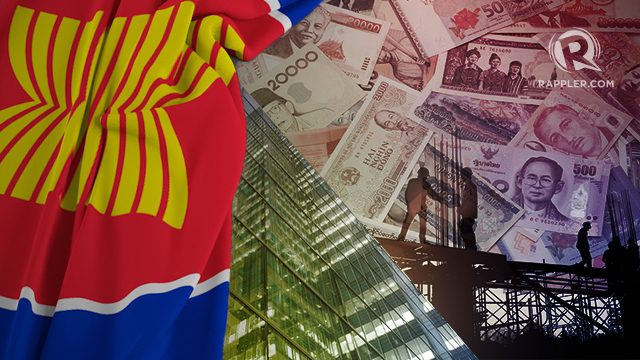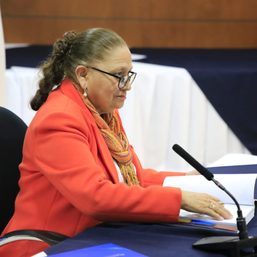SUMMARY
This is AI generated summarization, which may have errors. For context, always refer to the full article.

MANILA, Philippines – 50 years ago, in 1967, the Vietnam war raged in full force and involved Cambodia and Laos; Thailand was attempting to fix the relationship among Indonesia, the Philippines, and Malaysia who were bickering over certain disputes; there were anti-Chinese riots in Myanmar, then called Burma; and Singapore issued its first-ever Singapore dollar and drafted its first batch of the army through required national service.
Most countries had less than half of their current population, and tourism in the region was unimpressive.
But 1967 was also the year the Association of South East Asian Nations (ASEAN) was formed by 5 founding countries – the Philippines, Thailand, Indonesia, Malaysia and Singapore – in fear of communism, and with the aim of bringing forth economic growth. (READ: LOOK BACK: How ASEAN was formed)
Since then, the region has experienced incredible progress politically, socially, and economically, although some countries grew faster than others in certain areas. (READ: ASEAN at 50: Golden age or mid-life crisis?)
Below, Rappler compares the 10 countries across various measurements. The data shows the region’s rich history, challenges, and accomplishments in various fields. Hover your cursor over the lines on the graph below to see how numbers have changed over the years, per country.
Population
Back in 1967, the population of ASEAN was just a fraction of what it is today. Indonesia, the largest country in land area in terms of population, had just 106 million people when ASEAN was founded, compared to its over 260 million today. But over the last 50 years, we’ve also seen some countries overtake others in population.
Vietnam was second to Indonesia with about 40 million people, followed by Thailand’s 33.7 million, and the Philippines’ 32.8 million. But by 1980, the Philippine overtook Thailand’s population at 43 million, and then overtook Vietnam’s by year 2000. The Philippines is now the second most populated nation in ASEAN with 103 million people as of 2016.
Economic growth
GDP growth rate measures how fast a country’s economy is growing. It’s been a rollercoaster ride for ASEAN member nations in the last 50 years.
Some noticeable extremes in GDP growth rate?
- Brunei’s 19.83% drop in 1981 due to the introduction of the Oil Conservation Policy due to the unfavorable world market price of oil (upon which Brunei is dependent)
- The Philippines’ drop in 1984 and 1985 due to the assassination of former senator Benigno Aquino Jr (which triggered a collapse of confidence and credit ratings from international financial institutions)
- Myanmar’s 11.35% drop in 1988, the year the military regime transitioned from socialism to a market economy (but still had repressive policies pushing it further behind the rest of the region).
- The financial crisis in 1998 that affected most ASEAN nations.
Life expectancy
There has also been impressive improvement in health services over the last 5 decades, as all countries have seen signficant increases in life expectancy.
Singapore and Brunei remain on top as they did in 1967 with the highest life expectancies, while Cambodia, which had a life expectancy of just 42.48 years in 1967, has overtaken the Philippines, Laos, and Myanmar, and now boasts a life expectancy of 68.66 years.
The drops in life expectancies are as follows: the Vietnam war caused a drop in life expectancy in the early 1970s, while Cambodia saw life expectancy drop to a dismal 19.27 years in 1977, due to the Khmer Rouge, who was responsible for political and ethnic purges.
Enrollment rate, tertiary
The earliest data for this graph starts in 1970 and looks at the number of all tertiary level students enrolled at the start of the school year, expressed as a percentage of the population in the 5-year age group after the official secondary school leaving age. Singapore has no data for this measurement.
Brunei has the biggest percentage of its eligible population enrolled in tertiary education or universities, colleges, seminaries, and institutes of technology, with 1.65% as of 2015. Cambodia is the lowest at 0.82% – although it is already quite an improvement from its 0.23% in 1971.
Number of tourists
Thailand remains to be the go-to tourist destination in the region. Thailand has enjoyed massive growth in its number of tourist arrivals since 1995, according to earliest data available from the World Bank. From just 6.952 million tourists back then, it now boasts a whopping 32.588 million as of 2016. Malaysia’s growth has been close behind, growing from 7.469 million in 1995 to 25.721 million in 2015.
Brunei on the other hand, has seen little improvement in its tourism numbers over time, remaining the lowest in number of arrivals in the region. – Rappler.com
Add a comment
How does this make you feel?


![[WATCH] Try This: Empanada Salteña from Argentina](https://www.rappler.com/tachyon/2023/04/try-this-empanada-saltena-argentina.jpg?resize=257%2C257&crop=765px%2C0px%2C1037px%2C1037px)


There are no comments yet. Add your comment to start the conversation.